Sanctuary Resource Users
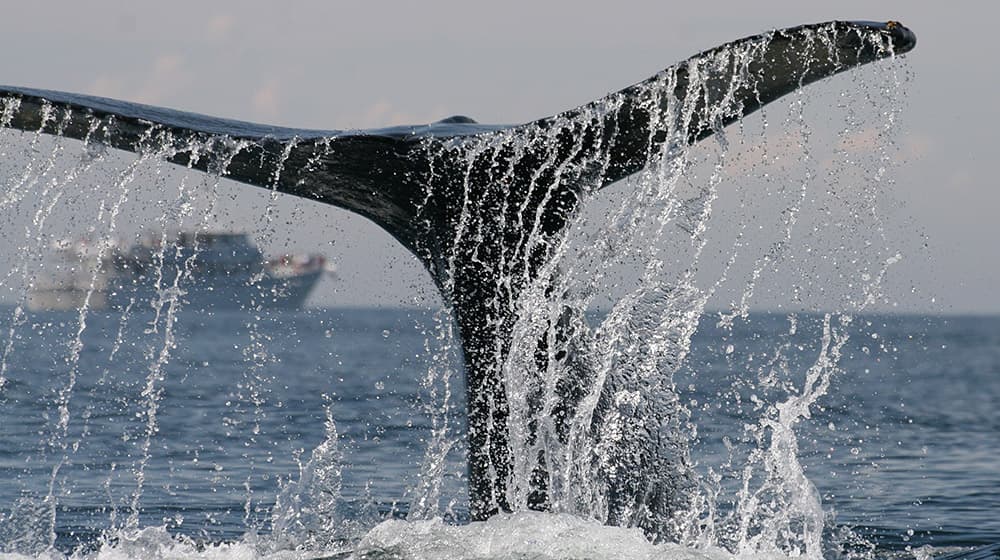
A humpback whale’s tail frames a whale watch vessel in the distance. Photo: NOAA (NOAA Fisheries Research Permit #605-1904)
Whether you are a boater, whale watcher, birder, fisher, or diver, we offer materials to help you better appreciate sanctuary resources and become active stewards of your national marine sanctuary.
Boaters and Whale Watchers
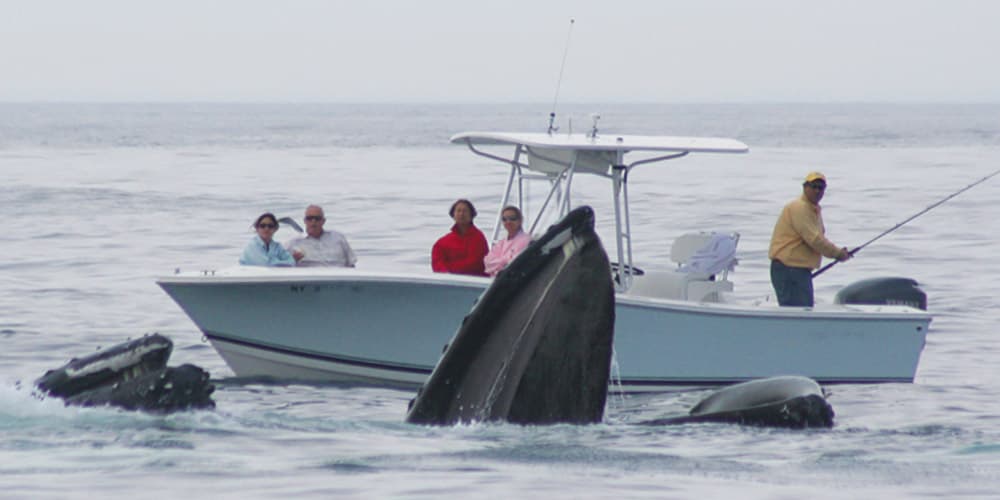
Knowing how to maneuver around whales is important for any boat operator venturing out into the sanctuary. Photo: Anne Smrcina/NOAA
Learn how to keep yourself and the whales safe, by taking the short online course "Sea A Spout," which offers simple, catchy tips on maneuvering around whales. Visit our booth at the annual Boston Boat Show. Meet sanctuary staff on the water when the Boater Outreach for Whale Watching team pulls up to your vessel.
Naturalists

Sanctuary staff provide timely information to naturalists who are the primary communicators to the whale watching public. Photo: Ari Friedlaender (NOAA Fisheries Research Permit #775-1875)
The sanctuary assisted in the development of Whale SENSE, a voluntary program for whale watch companies. Keep informed about sanctuary resources, issues, and other topics related to safe whale watching. Check with the sanctuary about the availability of funding opportunities for naturalist education programs. Learn techniques for communicating about climate change with sanctuary educators. The sanctuary provides speakers or other support to the annual Naturalists Workshop each spring.
Birders
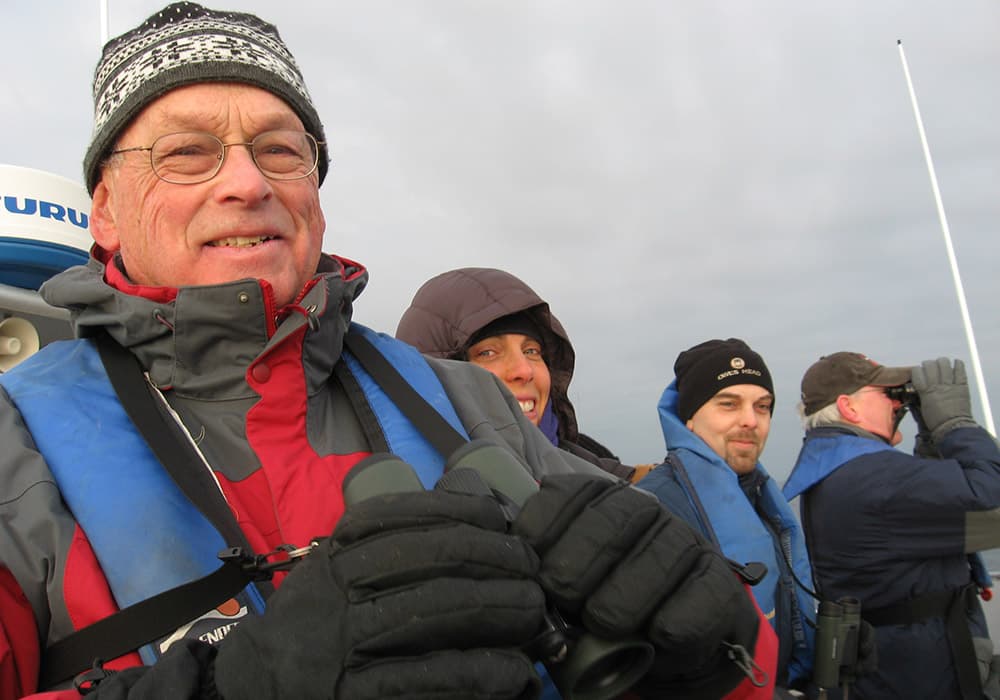
The sanctuary has produced birding webinars for the public. A National Marine Sanctuary Education Webinar Seabirds 101 introduces seabird characteristics and identifies local species with bird expert Wayne Petersen. A Facebook Live archived webinar with bird photographer Peter Flood provides tips on photographing sanctuary seabirds and case studies for some of his amazing photos. Expert birders are working with the sanctuary to build a database of bird sightings that may provide evidence of environmental changes over time.
Fishers
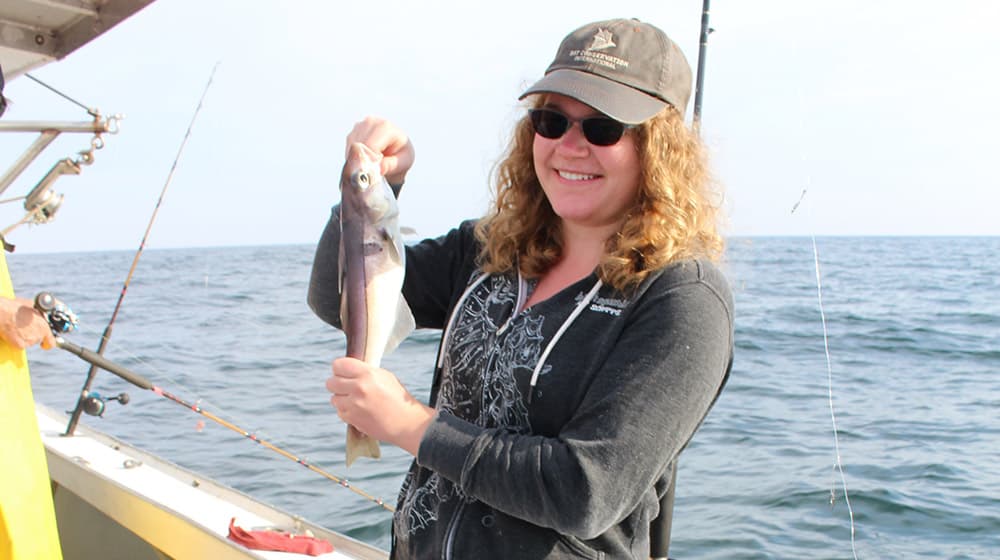
Recreational fishing provides outdoor fun and potentially a dinner, and has an even longer history than whale watching on Stellwagen Bank. Photo: Anne Smrcina/NOAA
The sanctuary works with NOAA Fisheries and the Massachusetts Division of Marine Fisheries to educate families about responsible fishing. Booths at fishing and boat shows provide sanctuary information. A funding opportunity (awards of up to $2,500) with the National Marine Sanctuary Foundation encourages projects that increase sanctuary stewardship, educate about fish and fishing, or support fish-related research in Stellwagen Bank National Marine Sanctuary.
Divers
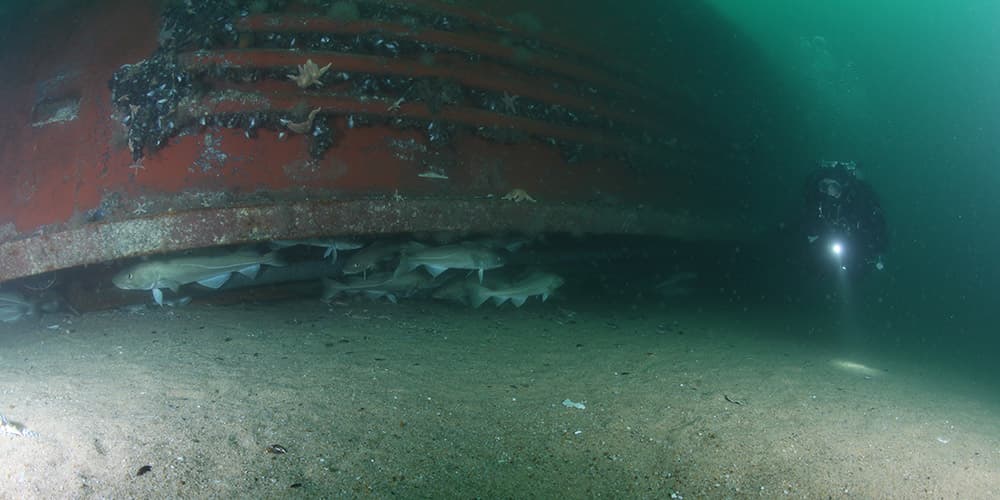
The sanctuary works with the dive community to prepare and publicize destination dive sites, like the wreck of the fishing vessel Patriot. Photo: Matthew Lawrence/NOAA
The sanctuary's advisory council works with the dive community to increase knowledge about dive sites. Information on recreational dive sites and shipwreck histories can be found in our Diving Section.

